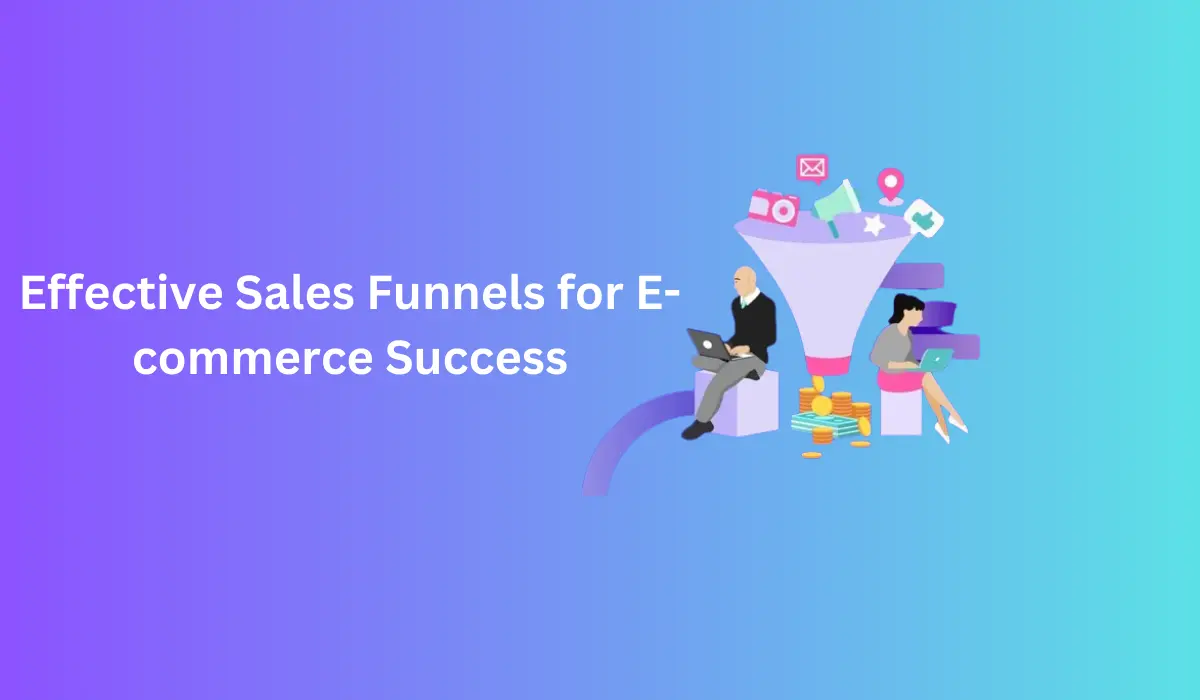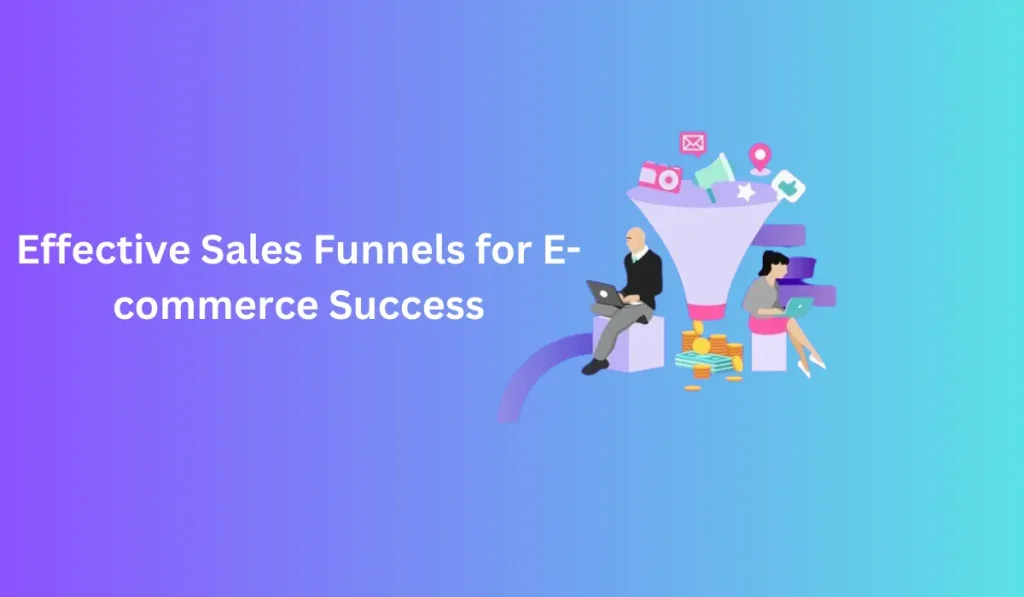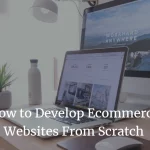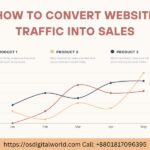In the ever-evolving landscape of e-commerce, having a robust sales funnel is imperative for driving conversions and maximizing revenue. A well-designed sales funnel can guide potential customers seamlessly through the buying journey, from initial awareness to final purchase. In this article, we’ll delve into creating effective sales funnels for e-commerce businesses, highlighting key strategies and best practices for success.
Understanding the E-commerce Sales Funnel
E-commerce sales funnels refer to the strategic process of guiding potential customers through a series of steps with the ultimate goal of converting them into paying customers. Just like traditional sales funnels, e-commerce sales funnels involve various stages that potential customers go through before making a purchase. These stages typically include awareness, interest, consideration, conversion, and retention.
By understanding and optimizing each stage of the e-commerce sales funnel, businesses can effectively attract, engage, and convert potential customers, ultimately driving revenue and fostering long-term relationships with their audience.
Importance of Developing Effective Sales Funnels for E-commerce
Developing effective sales funnels is crucial for e-commerce success due to several significant reasons:
Maximizing Conversions:
Sales funnels guide potential customers through a structured journey from awareness to purchase. By optimizing each stage of the funnel, businesses can increase conversion rates, turning more visitors into paying customers.
Improving Customer Experience:
A well-designed sales funnel ensures a smooth and seamless buying process for customers. By reducing friction points and addressing customer needs at each stage, businesses can enhance the overall shopping experience, leading to higher satisfaction and repeat purchases.
Increasing Revenue:
Effective sales funnels help businesses maximize revenue by encouraging upsells, cross-sells, and repeat purchases. Businesses can increase the average order value and lifetime customer value by strategically presenting relevant products or services to customers based on their preferences and behavior.
Building Customer Relationships:
Sales funnels enable businesses to engage with customers at various touchpoints throughout their journey. By providing valuable content, personalized recommendations, and exceptional customer service, businesses can build trust and foster long-term relationships with their audience, leading to increased loyalty and advocacy.
Optimizing Marketing Efforts:
Sales funnels provide valuable insights into customer behavior, preferences, and pain points. By analyzing data collected at each stage of the funnel, businesses can identify areas for improvement, refine their marketing strategies, and allocate resources more effectively to achieve better results.
Competitive Advantage:
In the highly competitive e-commerce landscape, businesses that have well-optimized sales funnels gain a competitive edge. By offering a superior customer experience, driving higher conversions, and maximizing revenue, businesses can outperform competitors and establish themselves as industry leaders.
Adapting to Changing Trends:
E-commerce trends and consumer behavior evolve rapidly. Effective sales funnels enable businesses to adapt to these changes quickly by testing new strategies, iterating on existing ones, and staying agile in response to market shifts.
Measuring Performance:
Sales funnels provide measurable outcomes at each stage, allowing businesses to track key metrics such as conversion rate, average order value, and customer acquisition cost. By monitoring these metrics, businesses can assess the effectiveness of their sales funnel and make data-driven decisions to optimize performance.
Top of Form
Developing Effective Sales Funnels for E-commerce
Crafting an effective e-commerce sales funnel involves a systematic approach to guide potential customers through each stage of the buying journey, from initial awareness to final purchase and beyond. Here’s a step-by-step guide to help you craft your e-commerce sales funnel:
1. Define Your Target Audience:
Understand your ideal customer’s demographics, interests, pain points, and purchasing behavior.
Conduct market research and analyze customer data to gain insights into your target audience.
2. Create Awareness:
Utilize various marketing channels such as social media, content marketing, search engine optimization (SEO), email marketing, influencer partnerships, and paid advertising to generate awareness about your brand and products.
Develop compelling content that resonates with your target audience and showcases the unique value propositions of your offerings.
3. Capture Interest:
Engage potential customers and capture their interest by providing valuable content, offers, and incentives.
Implement lead generation tactics such as email sign-ups, gated content, or exclusive discounts to capture contact information and build your email list.
Use targeted advertising and retargeting campaigns to re-engage visitors who have shown interest in your products.
4. Nurture Leads:
Develop a lead nurturing strategy to cultivate relationships with potential customers over time.
Provide relevant and personalized content to educate, inform, and address the needs of your audience.
Use email marketing automation to send targeted messages based on customer behavior and preferences.
5. Facilitate Consideration:
Provide detailed product information, including descriptions, specifications, images, and videos, to help potential customers make informed purchase decisions.
Showcase social proof such as customer reviews, ratings, and testimonials to build trust and credibility.
Implement features like live chat or chatbots to assist customers with any questions or concerns during the decision-making process.
6. Drive Conversions:
Optimize the checkout process to minimize friction and make it easy for customers to complete their purchases.
Offer multiple payment options and ensure a secure and seamless payment experience.
Use persuasive calls-to-action (CTAs), urgency tactics, and limited-time offers to encourage customers to take action and make a purchase.
7. Foster Retention:
Develop a post-purchase communication strategy to keep customers engaged and encourage repeat purchases.
Provide excellent customer service and support to address any issues or concerns promptly.
Implement loyalty programs, rewards, and incentives to incentivize repeat purchases and foster long-term customer loyalty.
8. Analyze and Optimize:
Continuously monitor key metrics such as conversion rate, average order value (AOV), customer acquisition cost (CAC), and customer lifetime value (CLV).
Use A/B testing and data analytics to identify areas for improvement and optimize your e-commerce sales funnel for better results.
Stay updated with industry trends and changes in customer behavior to adapt your strategy accordingly and stay ahead of the competition.
Also Read
Key Metrics and Optimization
Key metrics and optimization are crucial components of creating and maintaining effective sales funnels in e-commerce. By consistently monitoring and refining these metrics, businesses can enhance their funnel performance, drive more conversions, and increase revenue. Here are key metrics to track and strategies for optimization:
Key Metrics:
Conversion Rate (CR):
Definition: The percentage of visitors who complete a desired action, such as making a purchase.
Calculation: (Number of conversions / Total number of visitors) * 100
Optimization Strategies:
Improve website usability and design to reduce friction and enhance the user experience.
Test different variations of landing pages, product pages, and checkout processes to identify what resonates best with your audience.
Optimize CTAs, forms, and messaging to encourage action and reduce abandonment rates.
Average Order Value (AOV):
Definition: The average amount spent by customers in each transaction.
Calculation: Total Revenue / Number of Orders
Optimization Strategies:
Offer upsells, cross-sells, and bundling options to increase the value of each order.
Implement minimum order value thresholds for free shipping or other incentives to encourage higher spending.
Use personalized product recommendations based on customer behavior and purchase history to increase AOV.
Customer Acquisition Cost (CAC):
Definition: The cost incurred to acquire a new customer, including marketing and advertising expenses.
Calculation: Total Marketing Expenses / Number of New Customers Acquired
Optimization Strategies:
Focus on channels with the highest return on investment (ROI) and allocate budget accordingly.
Improve targeting and segmentation to reach the most relevant audience for your products or services.
Implement referral programs, affiliate marketing, or partnerships to leverage existing customer networks and reduce acquisition costs.
Customer Lifetime Value (CLV):
Definition: The total revenue generated by a customer over their entire relationship with your brand.
Calculation: Average Order Value × Purchase Frequency × Average Customer Lifespan
Optimization Strategies:
Foster customer loyalty through personalized communication, rewards programs, and excellent customer service.
Encourage repeat purchases and upsells by offering exclusive deals, promotions, and incentives.
Continuously engage with customers post-purchase to maintain relationships and increase CLV over time.
Cart Abandonment Rate:
Definition: The percentage of visitors who add items to their cart but do not complete the purchase.
Calculation: (Number of Abandoned Carts / Number of Initiated Checkouts) * 100
Optimization Strategies:
Implement cart abandonment recovery emails with personalized recommendations and incentives to encourage completion.
Streamline the checkout process by reducing steps, simplifying forms, and offering guest checkout options.
Use exit-intent pop-ups or real-time messaging to address objections and offer assistance before visitors leave the site.
Continuous Optimization:
Conduct A/B testing and experimentation to identify areas of improvement and test different strategies.
Use analytics tools to track customer behavior, identify patterns, and make data-driven decisions.
Stay updated with industry trends, changes in consumer behavior, and competitor strategies to adapt and evolve your sales funnel accordingly.
Regularly review and refine your marketing campaigns, messaging, and offers based on performance metrics and customer feedback.
Collaborate cross-functionally within your organization to align sales, marketing, and customer service efforts and optimize the end-to-end customer experience.
Conclusion
Crafting an effective sales funnel is essential for e-commerce success. By understanding the stages of the funnel and implementing tailored strategies for each stage, you can attract, engage, and convert potential customers effectively. Continuously monitor key metrics and optimize your approach to drive maximum results and foster long-term customer relationships. With a well-designed sales funnel in place, your e-commerce business will be primed for growth and success in the competitive online marketplace.





